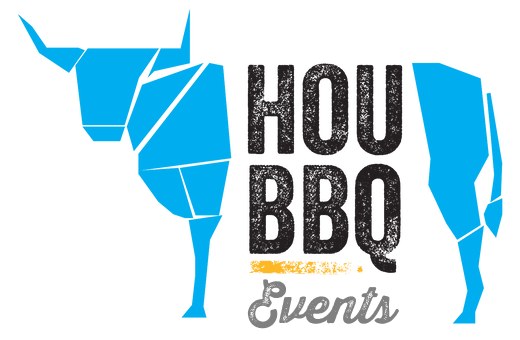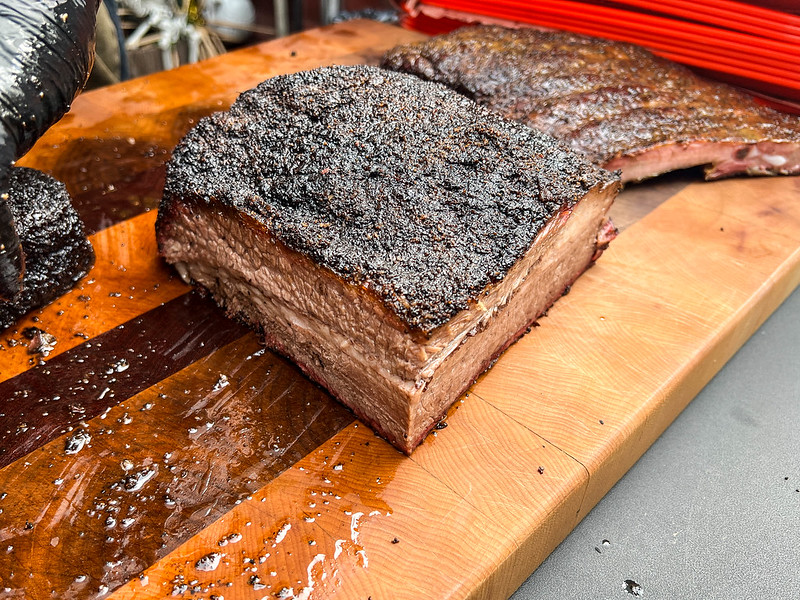One of the earliest references to brisket in Texas cooking comes from a rather ominous advertisement in the November 12, 1876 edition of The Galveston Daily News.
“Proposals are invited … for furnishing supplies for the Asylums for the Blind, Deaf and Dumb, and Lunatic.”
Among the many food staples solicited — flour, rice, beans, lard — is a request for “Fresh beef, 12 lbs. of good round steak and 18 lbs. good brisket each day, to be delivered by 6 o’clock A.M.”
Round steak and brisket were cheaper cuts used to make stews and other dishes that combine meat with fillers like beans and rice to stretch the ingredients for maximum economy.
In the late 1800s, brisket began appearing in advertisements for meat markets, most notably in 1888 editions of the Waco Morning News in which a butcher by the name of J.J. Riddle listed a variety of meats for his “Cheap Cash Market” including a “brisket roast” for five cents per pound. This was the least expensive cut among others, for example, a “choice porterhouse” was 10 cents per pound.
Notably, these advertisements by Riddle also mentioned “A new departure, fresh barbecued meats, everyday direct from the kiln.” This is undoubtedly one of the earliest references to the novelty of Texas meat markets transitioning from selling raw meats to cooked barbecue in the late 1800s.
But these weren’t the only smoked briskets you would find in Texas at the time. The equivalent of Jewish delicatessens during this era advertised smoked brisket as part of a menu of cured or preserved meats.
For instance, in the February 1, 1898 edition of the El Paso Times, a J.B. Watson grocery store advertised “David Berg’s celebrated Sausage, Corned Beef, Smoked Brisket, Beef Tongues.”
To be sure, this would not have been the smoked barbecue brisket Texans know today, but rather more like the sliced roast beef you get at the deli counter of a contemporary grocery store.
As the century turned, brisket continued to show up in grocery store ads. This was also the time when newspapers featured recipes for the “modern housewife,” essentially creating demand for kitchen appliances and other accoutrements of the growing American household.
An article in the November 3, 1916 edition of the Fort Worth Star-Telegram titled “Choosing and Cooking Beef” noted about brisket that “the demand for this cut is steadily increasing and it is used principally in stews, pot roasts and soups.”
Starting in the 1930s, stand-alone barbecue joints started advertising smoked brisket in Texas newspapers.
Indeed, the 1930s through the 1960s was a time of great change in Texas barbecue, in which three trends combined to create the great tradition of smoked brisket we know today: meatpackers pre-butchered briskets into “boxed beef” for easy delivery to barbecue joints, pitmasters began using offset pits to cook the meat, and implemented the “low-and-slow” cooking method particularly suited for dense, fatty cuts of beef like brisket.
The June 21, 1949 issue of the Bryan Daily Eagle featured an article titled “A&M Meats Lab Manager Devises New Method of Preparing Smoked Meat.” It describes a low-temperature, overnight cook of about 12-18 hours, after which “the smoked beef is ready to eat; no further cooking is necessary.”
The manager, Roy Snyder, may have gotten the cooking method right, but failed to predict the appetite of contemporary Texans for glistening, fatty slices of brisket: “Snyder thinks brisket from choice and prime beef will be too fat to suit most people.”



